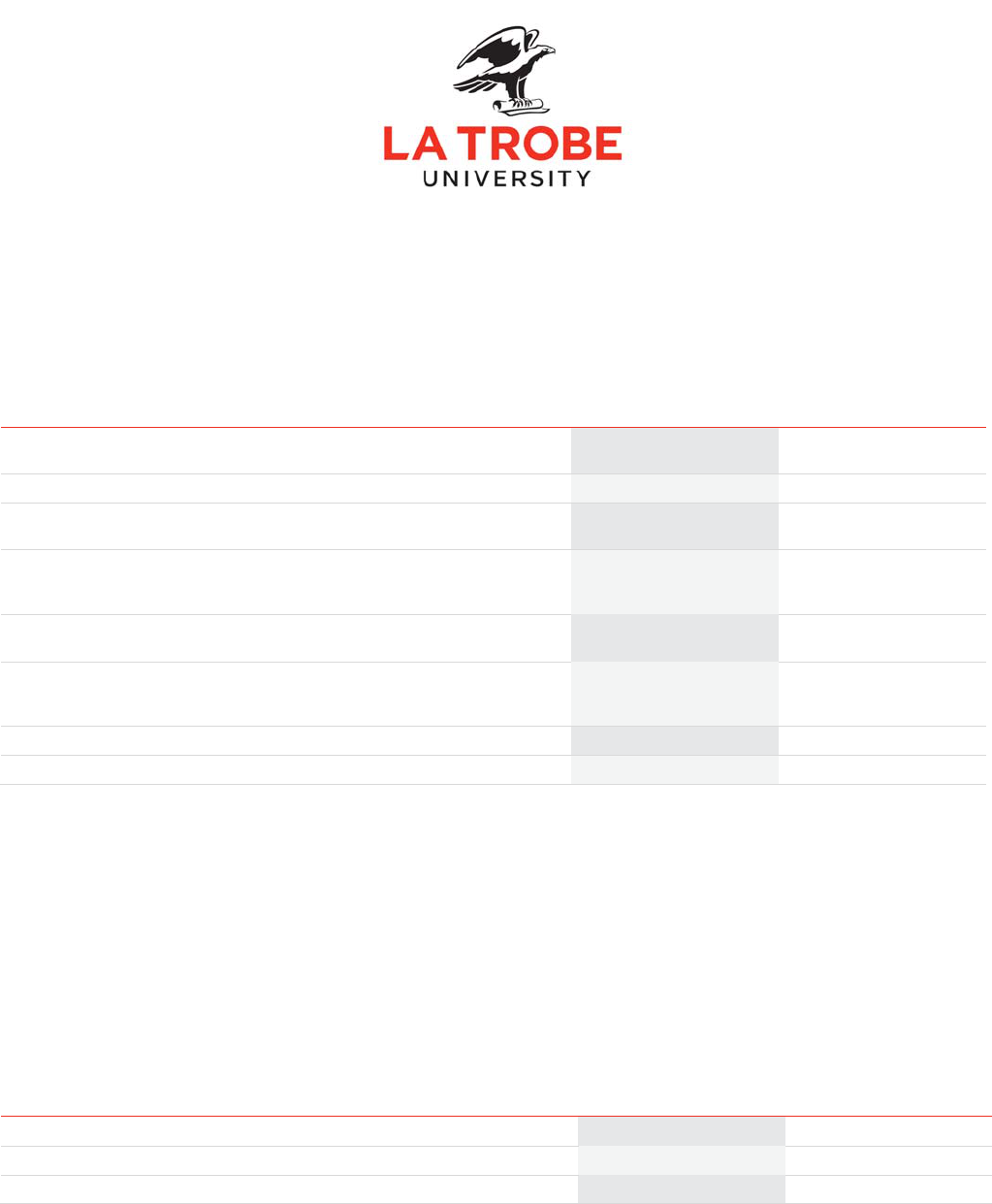
Disclaimer:
Every effort has been made to ensure the information contained in this publication is accurate and current at the date of printing. For the most up-to-date information, please refer to the
La Trobe University website (latrobe.edu.au) before lodging your application. Published by La Trobe University, June 2018. La Trobe University is a registered provider under the Commonwealth
Register of Institutions and Courses for Overseas Students (CRICOS). CRICOS Provider 00115M.
latrobe.edu.au
June 2018 | Page 1 of 2
Student profile – Bachelor of Media and Communication (ABMC)
Location: Melbourne
Applicant background Full year 2018
Number of students Percentage of all students
(A) Past higher education study
(includes a bridging or enabling course)
19 18.80%
(B) Past vocational education and training (VET) study 13 12.90%
(C) Work and life experience
(Admitted on the basis of previous achievement not in the other three categories)
6 5.90%
(D) Recent secondary education:
Admitted solely on the basis of ATAR (regardless of whether this includes
the impact of adjustment factors such as equity or subject bonus points)
51 50.50%
Admitted where both ATAR and additional criteria were considered
(e.g. portfolio, audition, extra test, early offer conditional on minimum ATAR)
5 5.00%
Admitted on the basis of other criteria only and ATAR was not a factor
(e.g. special consideration, audition alone, schools recommendation scheme
with no minimum ATAR requirement)
0 0.00%
International students 7 6.90%
All students 101 100.00%
Notes:
“<5” – the number of students is less than 5
N/A – Students not accepted in this category
N/P – Not published: the number is hidden to prevent calculation of numbers in cells with less than 5 students
ATAR profile – Bachelor of Media and Communication (ABMC)
(ATAR-based offers only, across all offer rounds)
ATAR
(excluding
adjustment factors) *
Selection Rank
(ATAR/OP plus any
adjustment factors) *
Highest rank to receive an offer 90.7 99.95
Median rank to receive an offer 63.55 67.45
Lowest rank to receive an offer 41.65 55.1
Notes:
“<5” – the number of students is less than 5
N/A – Students not accepted in this category
N/P – Not published: the number is hidden to prevent calculation of numbers in cells with less than 5 students

Disclaimer:
Every effort has been made to ensure the information contained in this publication is accurate and current at the date of printing. For the most up-to-date information, please refer to the
La Trobe University website (latrobe.edu.au) before lodging your application. Published by La Trobe University, June 2018. La Trobe University is a registered provider under the Commonwealth
Register of Institutions and Courses for Overseas Students (CRICOS). CRICOS Provider 00115M.
latrobe.edu.au
June 2018 | Page 2 of 2
Admissions Transparency at La Trobe
Admissions Transparency
La Trobe is committed to providing students with transparent information
so you can make informed decisions about which course to study. You can
learn more about our admissions process on our website.
latrobe.edu.au/study/apply
Admission Philosophy and Principles
We admit applicants to our courses based on merit, where applicants
having a reasonable expectation of success in their chosen course.
The principles which guide admission decisions are:
Academic merit
Widening participation
Equitable
Transparent
latrobe.edu.au/study/undergrad/how-to-apply/admissions
Student profile
The student profile table gives an indication of the likely peer cohort for
commencing students in each undergraduate course at La Trobe.
It provides information on students that were enrolled at 31 March
(the census date), including international students. The student profile
shows applicant background information.
ATAR Profile
This table shows the ATAR profile for applicants who were offered a place
in Semester 1 2018.
This information will give you a picture of the educational attainment that
is required for your selected course, and should be used in conjunction
the course entry requirements. It also shows the impact of ATAR related
adjustment factors resulting from Special Entry schemes.
